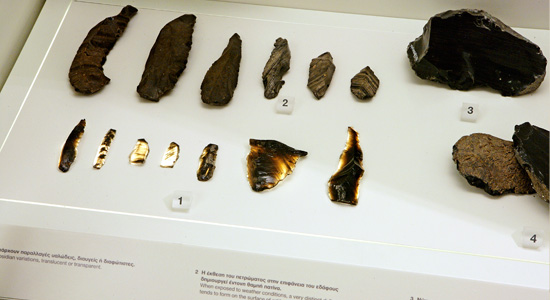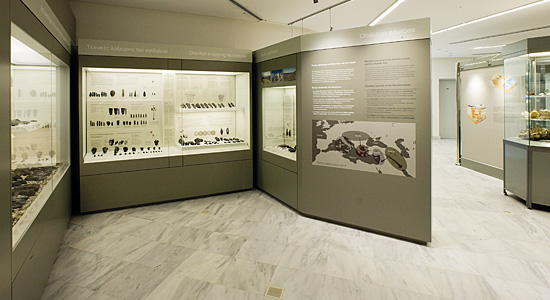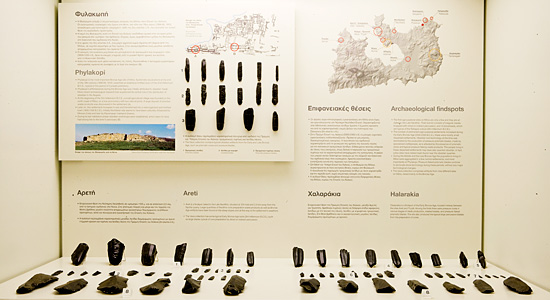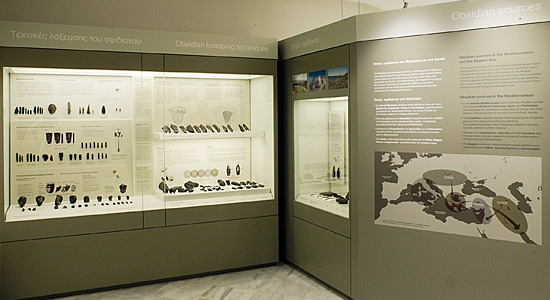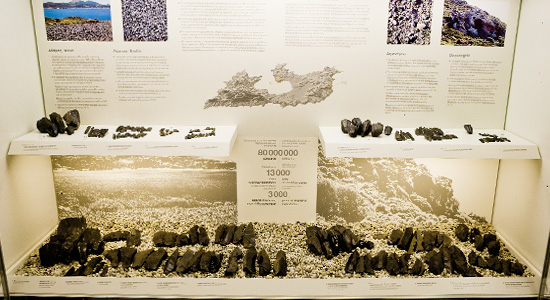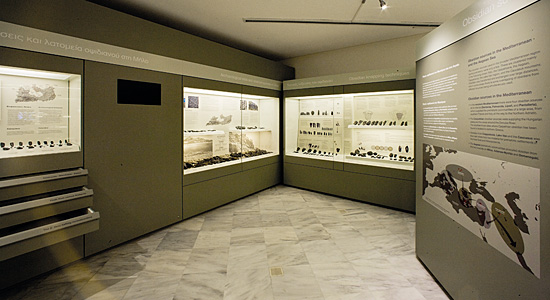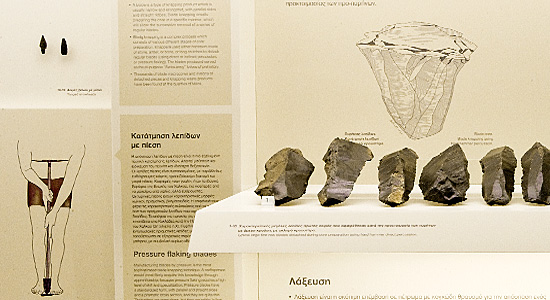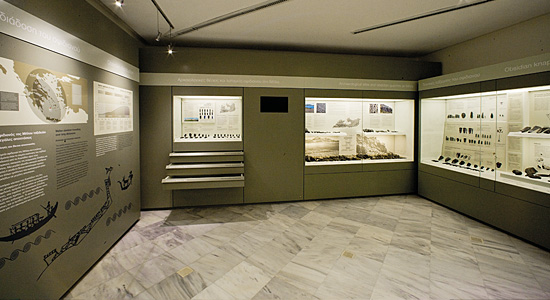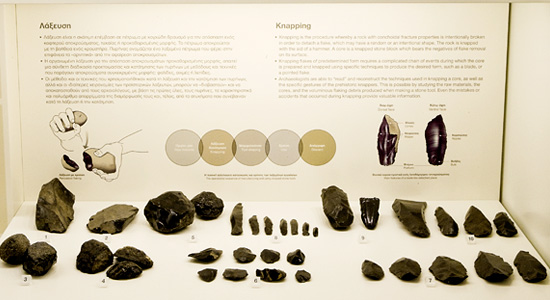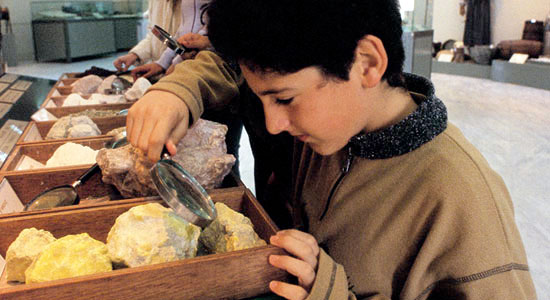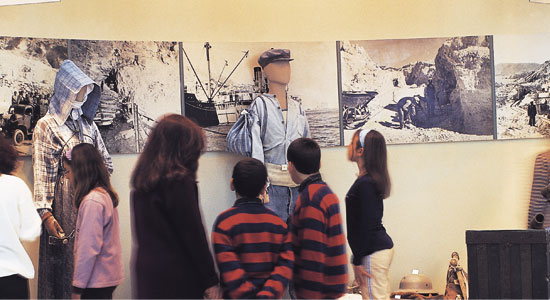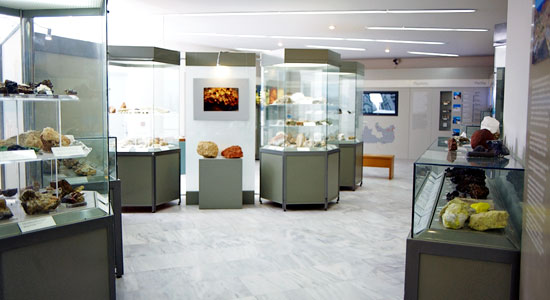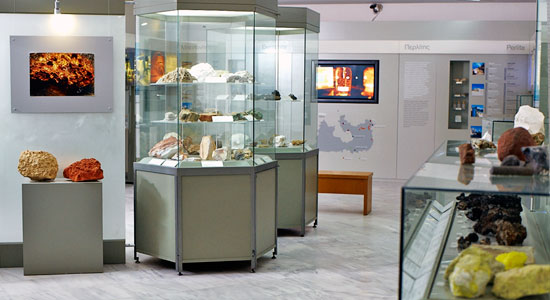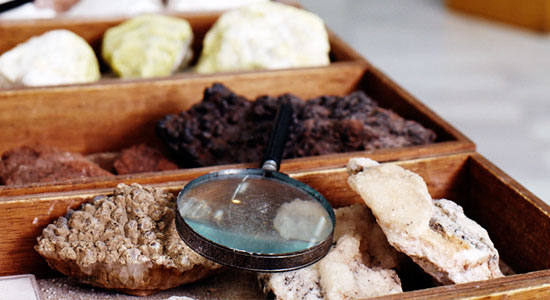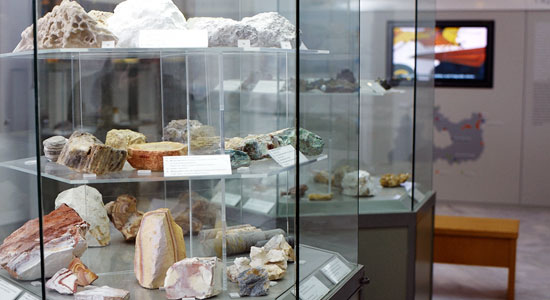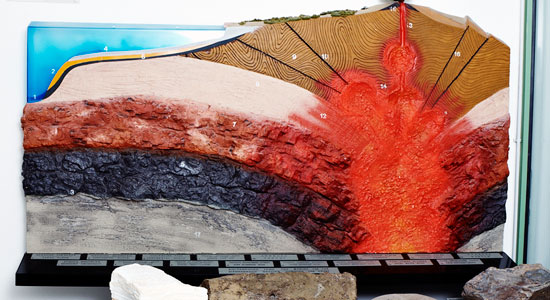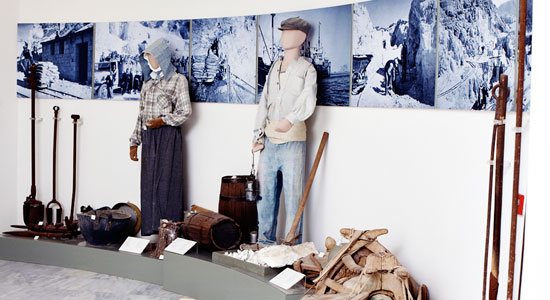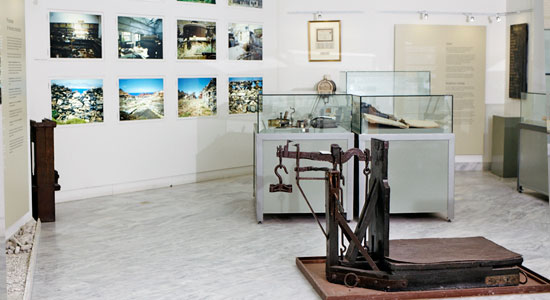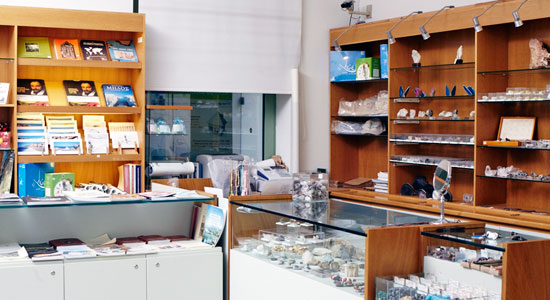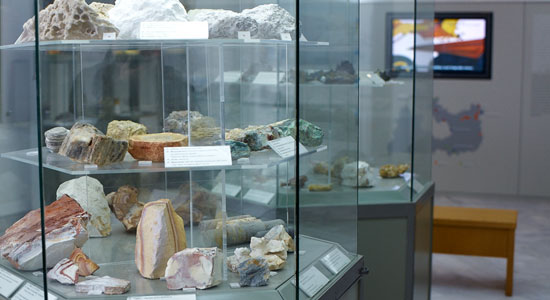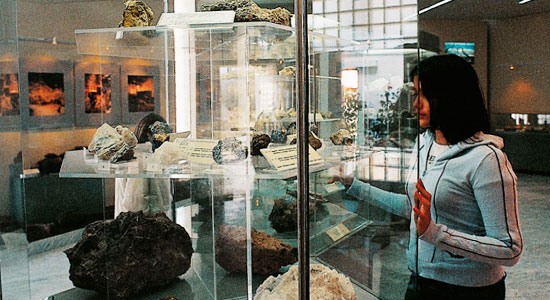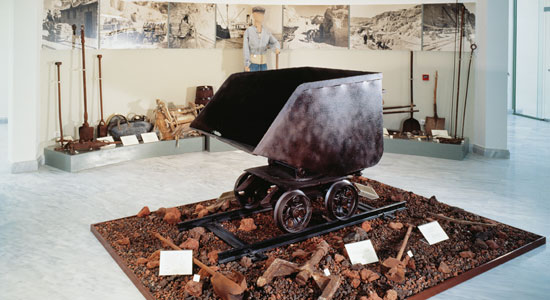Facilities, exhibits & ground plans
Objects, pictures and photographs in the exhibition areas of the museum present the impressive geological peculiarity of Milos and narrate in their own way the mining history of the island, while, at the same time, they pay a minimum tribute to all those who have worked and are still working for the development of mining on the island, and they also connect the past to the present. (Watch the video)
The building where the museum is housed includes the ground and the 1st floor, constituting the main exhibition areas, as well as the auxiliary rooms in the basement.
On the ground floor, the visitor gets a first contact to the mining history and activity of Milos. A series of photographs, representations and paintings depict schematically its various stages. The presentation is surrounded by old and new geological and topographical maps of the island, several authentic tools and instruments. Moreover, depictions of the current mining activity and environment restoration works are presented.
The room of the 1st floor is dedicated to the presentation of Milos’ mineral wealth. Samples of minerals prevailing in the current mining activities of the island are exhibited in window-cases, accompanied by photographic material and information on their processing and uses. In the same section an Interactive Touch Unit is installed presenting the minerals of Milos.
On the same floor, the Obsidian Collection of Zafeiris Vaos, a collector and folklore expert from Milos, is exhibited publicly for the first time; the collection consists of artifacts made of obsidian, an igneous rock that is a characteristic rock of Milos and forms a very important chapter in the archeology of early Aegean tool-making. The collector, Zafeiris Vaos, started collecting obsidian artifacts in 1959 following an official pronouncement and a relevant permit by the Archeological Council. The collection includes characteristic artifacts of obsidian-processing techniques found in a number of Milos quarries (such as Nychia and Demenegaki) that were the main source of obsidian for the prehistoric settlements around the Aegean during seven millennia.
After the collector passed away, the Kyriacopoulos family bought the collection, following an approval by the Ministry of Culture, and subsequently donated it to the MMM, thus safeguarding its return to its place of origin, in accordance with the wishes of both the local community and the late collector.
The auxiliary facilities of the basement consist of one room with a 40-person capacity, equipped with audiovisual means to project videos related to the themes of the Museum and host scientific events, as well as one room for various purposes, like educational programs, special exhibitions etc.
Museum plan
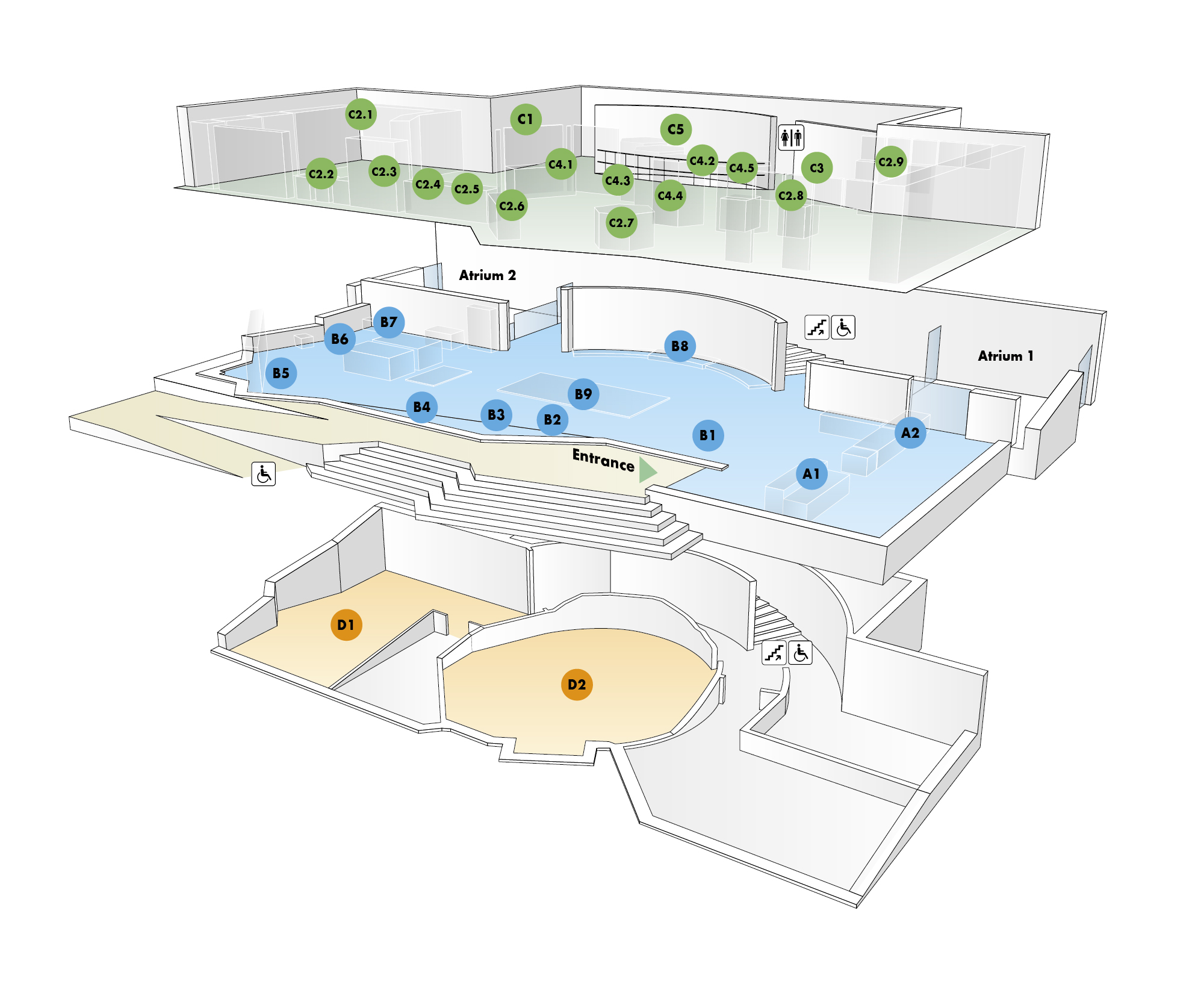
Ground floorSection A Section B Atrium 1 Atrium 2 Staircase |
1st floor planSection C BasementSection D |

